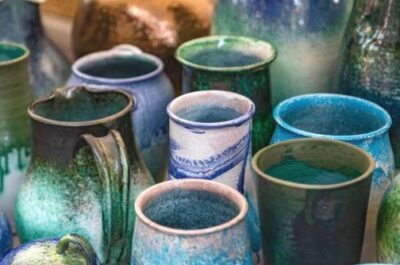What is the Future Outlook for the China Clay Market?

Have you ever found yourself asking what makes paper so smooth, paint so vibrant or your mug so sturdy? China clay may hold the answer: this amazing natural material used in many everyday things that we come in contact with each day but what will its future look like?
Let’s venture into the fascinating world of China clay together. We will discover its many uses and look ahead at its market, exploring exciting developments yet to come, while not forgetting challenges we might encounter along the way.
What is China Clay?
China clay, also referred to as kaolin, is a soft white soil-dug material formed over millions of years when rocks break apart into smaller fragments and then compact together forming soft clay deposits called Kao-ling, hence giving rise to its name as well. Kaolin deposits were first mined out from Chinese earth for use at Kao-ling which led to its moniker as China clay or “kaolin”.
Imagine an enormous rock slowly dissolving into fine white powder: that is how China clay is created. After being mined, it must then be washed and processed in order to rid itself of any remaining bits like sand or other contaminants before becoming pure white powder that can be utilized in various ways across many applications.
The Many Uses of China Clay
China clay’s versatility lies in its many uses in industry – not only pottery. Don’t let its name mislead you; China clay has many industries for which it can be useful!
Paper and Packaging
Did you know China clay is an integral component in making paper? By filling in any gaps between fibers, China clay helps make smoother paper that prints easier – like glossy magazines! When reading glossy magazines you see first-hand China clay’s work: helping ink sit firmly onto surfaces to produce vibrant pictures with vibrant and sharp imagery.
In Paints and Coatings
China clay can also play an integral part in paint’s world. Used as a filler to increase thickness and strength in paint applications, its white hue helps make colors seem brighter while helping paint spread uniformly across walls or other surfaces.
In Ceramics and Pottery

China clay is perhaps best-known for its use in ceramic production. Porcelain uses China clay as its core component to craft beautiful dishes, tiles and bathroom fixtures such as sinks and toilets – with high heat tolerance making the final products very robust and long-term durable products.
In Other Products
The list of uses of China clay goes on and on. It’s found in rubber and plastics to make them stronger. It’s in some cosmetics and medicines because it’s gentle on the skin. It can even be found in things like toothpaste and light bulbs. It’s a true multi-purpose material.
The Future of the China Clay Market
China clay markets continue to develop at an exciting rate, offering some interesting trends, challenges and new opportunities in their wake. The world is constantly shifting – so too are China clay markets! Looking ahead, they look promising as future opportunities beckon for this material.
Growing Demand in Many Areas
China clay markets remain buoyed by demand. People continue to need the products it helps create; as more countries build homes and offices they require paint, tiles, fixtures and much more that requires China clay production – driving demand even further upwards.
China clay plays a critical role in both paper and packaging industries. Even as our reading habits shift towards online retail shopping, demand has skyrocketed for cardboard boxes and packaging materials made stronger to withstand printing processes more effectively – which requires strong China clay materials that help make these stronger than before. It plays an essential part here!
New and Exciting Opportunities
Scientists are continually finding innovative applications of china clay. One exciting area is to produce new, advanced materials with its use. Researchers are exploring using China clay in water purification or to make coatings for electronics devices.
China clay offers another advantage by being eco-friendly. China clay is an all-natural product and companies increasingly look for alternative materials instead of plastics and chemicals in products; therefore it could become increasingly popular as companies search for eco-friendly options like it to make products more sustainable.
Challenges to Overcome
On the path ahead are also obstacles and difficulties, one being mining operations that use too much energy and water to extract China clay from the ground. Companies are searching for more environmentally-friendly mining operations so as to decrease impact while making best use of resources available.
Competition poses another significant hurdle to China clay producers; other minerals and synthetic materials could potentially replace China clay as the premier product in terms of both quality and performance. To remain ahead, their industry must demonstrate why their product stands alone as being superior for both purposes.
Looking Ahead with a Positive View
China clay’s future looks extremely bright. A material used for centuries, and still essential today; from paper in your notebook to paint on walls – China clay is all around us and remains crucial in many forms of industry today.
As technology evolves and our world expands, demand for China clay should increase accordingly. Industry players have responded by developing innovative uses for it and improving how it functions – setting itself up for an equally promising and long-lasting future – serving our everyday lives for many more years than expected.

